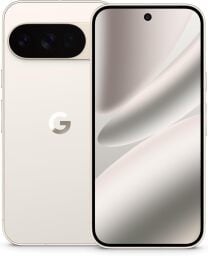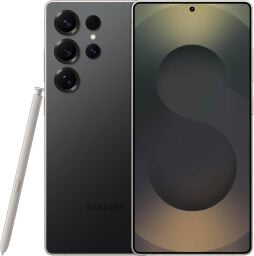Tech
Flagship fight: Google Pixel 10 Pro vs. Samsung Galaxy S25 Ultra

In the market for a new, premium Android smartphone? Luckily, there are some heavy-hitting options for you.
Namely, the Google Pixel 10 Pro and the Samsung Galaxy S25 Ultra. The former just hit the scene thanks to the big Made by Google event, while the latter's been on store shelves since January. Rather than sitting here and establishing more context, though, let's just jump right into the comparison so you can figure out which flagship appeals to you more.
Google vs. Samsung: The Pixel 10 Pro has the better price

Credit: Joe Maldonado/Mashable
Many of the differences between these two phones will come down to personal preference and will contain a decent amount of nuance. Price is not one of them.
The Google Pixel 10 Pro starts at $999 while the Samsung Galaxy S25 Ultra starts at $1,299. Perhaps the rest of this article will help you understand why Samsung's handset is more expensive, but the fact of the matter is that going with Google will save a bit of money.
Design: Neither phone is winning design awards

Credit: Joe Maldonado/Mashable

Credit: Joe Maldonado/Mashable
Ultimately, these are both smartphones, meaning they both look like smartphones. There's only so much that can be done within that framework, in terms of physical design. That said, both Samsung and Google have their own unique design languages that are worth talking about here.
The Galaxy S25 Ultra made a huge improvement over its predecessor by including rounded edges on the phone's frame, though they are notably still more angular than the Pixel 10 Pro. The arrangement of the rear camera modules accounts for the biggest design change between these two phones, of course. Samsung lets its triple-lens array float freely without any kind of housing or camera bump, instead opting to just let the three lenses sit on top of one another. Google, on the other hand, still uses the same horizontal camera bar for its three lenses, which makes the phone look kinda like Cyclops from X-Men.
Samsung will pretty much always "win" when it comes to color options, too, just because it usually offers a lot more to choose from. The Galaxy S25 comes in seven colors: Titanium Jadegreen, Titanium Jetblack, Titanium Pinkgold, Titanium Black, Titanium Gray, Titanium Silverblue, and Titanium Whitesilver. It should be noted that the first three colors in that list are only available online.
Meanwhile, the Pixel 10 Pro comes in four hues: Moonstone, Jade, Porcelain, and Obsidian.
Which flagship has better specs? Samsung.

Credit: Joe Maldonado/Mashable
Phones are for using and not for looking at, so let's talk specs. Here are the basic specs for the Pixel 10 Pro:
-
6.3-inch display with 1280×2856 resolution and 1-120Hz adaptive refresh rate
-
Google Tensor G5 chip
-
16GB RAM
-
128GB/256GB/512GB/1TB storage
-
4,870mAh battery
And here are the equivalent specs for Galaxy S25 Ultra:
-
6.9-inch display with 3120×1440 resolution
-
Snapdragon 8 Elite for Galaxy chip
-
12GB RAM
-
256GB/512GB/1TB storage
-
5,000mAh battery
There are obviously a few things to discuss here. The S25 Ultra is a much bigger phone than the Pixel 10 Pro, with a higher resolution display and a bigger battery. It's actually closer to the $1,199 Pixel 10 Pro XL in these respects, perhaps making that phone a more directly comparable device. Having said that, it's a clear advantage for Google that a smaller, cheaper version of its Pro phone exists at all.
That allows Google to offer a 128GB storage option for those who want it, but it also means the display and battery are smaller. Life is all about compromises. Interestingly, Google's phone has more RAM, regardless of size. There are no benchmarks out there yet for the Tensor G5 chip, though if previous years are any indication, it will probably not score as well as the Snapdragon 8 Elite chip. That doesn't mean the Pixel 10 Pro will have markedly worse performance, though. In my experience, they're usually pretty comparable.
Samsung actually has one major advantage in this department: an included stylus. The S Pen accessory comes with the S25 Ultra, and the phone has a built-in slot for it. You may or may not be the type of person who wants to use a stylus, but that's objectively added value over the Pixel 10 Pro.
Google has the edge on AI features

Credit: Screenshot: Samsung
Now that we're a few years into the whole "every phone has AI features" trend, the differences between devices are starting to get a little more blurry. Both of these handsets are marketed as "AI smartphones."
To succinctly sum up these two phones in particular, the Pixel 10 Pro's biggest new AI features are meant to play catch-up with Samsung and other competitors. That's not hard for Google, which has a full suite of AI tools powered by Gemini. And since the Pixel 10 Pro comes with a free year of Google AI Pro (if you purchase at the Pixel store, at least), Google may have the edge.
Namely, the Pixel 10 Pro has live language translation during phone calls, theoretically enabling seamless vocal communication across language barriers (we're still testing the Pixel 10 series). The Galaxy S25 Ultra could already do this in January, though Google samples your voice for a more natural conversation and performs the translation on your device for privacy. Google also added Daily Hub, a new one-stop-shop for your daily schedule, weather forecast, to-do list, and relevant news. Samsung, believe it or not, also had that earlier this year.
Google does have some advantages in terms of AI photo editing. Pixel 10 Pro can edit photos based on text prompts, in case your ability to describe things is stronger than your editing finger. Camera Coach is also an intriguing new feature that can potentially teach you how to properly compose photos. Aside from that, many of the AI editing features across both of these phones are pretty similar.
We also have to mention Google's new Magic Cue tool. It's an AI assistant that finds information from apps like Gmail, Calendar, Screenshots, and Messages so it can automatically make recommendations. Texting someone about a dinner reservation? Magic Cue will pull up the booking and add a link to the text for you.
Pixel 10 Pro vs. Galaxy S25 Ultra: Which phone has the best camera?

Credit: Joe Maldonado/Mashable
Which flagship is better for photography? We can't render a verdict just yet.
At Made by Google, the company claimed the Pixel 10 Pro has the best camera on any phone in the world. While the S25 Ultra offers a way higher megapixel count on its main rear camera, the Pixel 10 Pro supposedly closes the gap with strong AI zoom, high-quality nighttime photography, and motion stabilization for video.
The Pixel 10 Pro's camera specs are as follows:
-
Rear cameras: 50MP wide, 48MP ultrawide, 48MP telephoto with 5x optical zoom
-
Front camera: 42MP
And here's what you get with Galaxy S25 Ultra:
-
Rear cameras: 200MP wide, 50MP ultrawide, 50MP telephoto with 5x optical zoom
-
Front camera: 12MP
It's also worth mentioning that both phones now offer up to 100x digital zoom, though it remains to be seen how well it works on Pixel 10 Pro. On Galaxy S25 Ultra, it's pretty obvious that the phone is doing some digital trickery to fill in the blanks.
Regardless, 200MP vs. 50MP for the main rear lens is a pretty stark difference, although we need to do detailed testing to see if it manifests in a meaningful way. The Pixel 10 Pro might make up for that with a 42MP selfie cam, depending on how much you like taking selfies.
At the end of the day, you're probably going to be able to take pretty good pictures of your pets and/or meals for Instagram, no matter which phone you choose.
Google Pixel 10 Pro, 128GB, Unlocked + $200 Amazon Gift Card

Samsung Galaxy S25 Ultra, 256GB, Unlocked

Samsung Galaxy S25 Ultra, 256GB, Unlocked

Tech
NYT Pips hints, answers for August 24
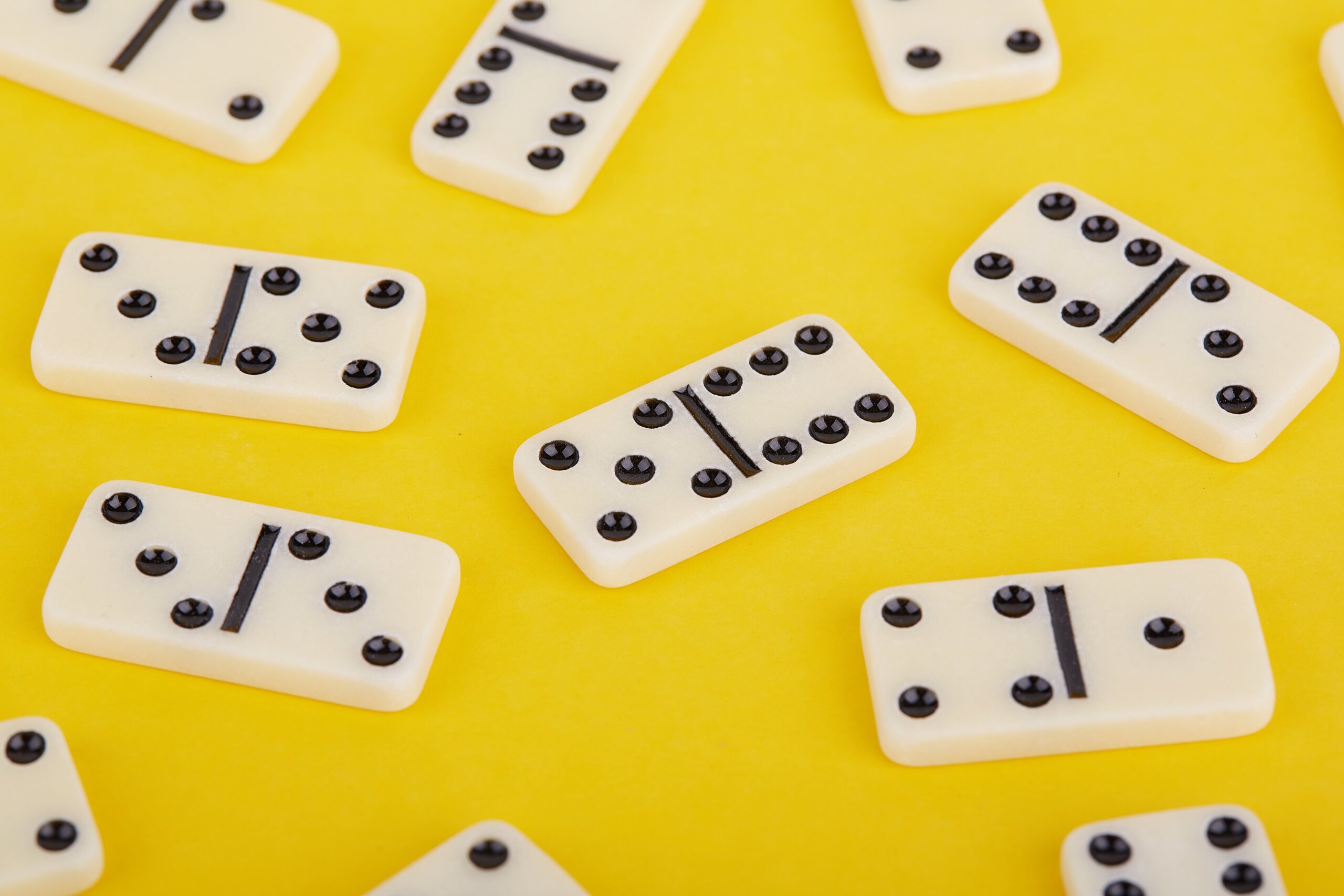
Pips is the newest game in the New York Times catalogue. Released in August 2025, the new game puts a unique spin on dominoes, creating a fun single-player experience that could become your next daily gaming habit.
Currently, if you're stuck, the game only offers to reveal the entire puzzle, forcing you to move onto the next difficulty level and start over. However, we have you covered! Below are piecemeal answers that will serve as hints so that you can find your way through each difficulty level.
How to play Pips
If you've ever played dominoes, you'll have a passing familiarity for how Pips is played. Like dominoes, the tiles are placed vertically or horizontally and connect with each other. The main difference between a traditional game of dominoes and Pips is the color-coded conditions you have to address. The touching tiles don't necessarily have to match.
The conditions you have to meet are specific to the color-coded spaces. For example, if it provides a single number, every side of a tile in that space must add up to the number provided. It is possible – and common – for only half a tile to be within a color-coded space.
Here are common examples you'll run into across the difficulty levels:
-
Number: All the pips in this space must add up to the number.
-
Equal: Every domino half in this space must be the same number of pips.
-
Not Equal: Every domino half in this space must have a completely different number of pips.
-
Less than: Every domino half in this space must add up to less than the number.
-
Greater than: Every domino half in this space must add up to more than the number.
If an area does not have any color coding, it means there are no conditions on the portions of dominoes within those spaces.
Easy difficulty hints, answers for Aug. 24
Number (6): Everything in this space must add up to 6. The answer is 0-6, placed vertically.
Equal (1): The domino halves in this space must be 1. The answer is 1-1, placed horizontally.
Equal (4): The domino halves in this space must be 4. The answer is 0-4, placed horizontally; 4-4, placed vertically.
Medium difficulty hints, answers for Aug. 24
Greater than (2): Everything in this space must add up to more than 2. The answer is 4-3, placed horizontally.
Number (1): The domino halves in this space must add up to 1. The answer is 1-4, placed horizontally.
Number (16): The domino halves in this space must add up to 16. The answer is 1-4, placed horizontally; 4-3, placed horizontally; 4-2, placed horizontally; 0-2, placed horizontally.
Number (0): The domino halves in this space must add up to 0. The answer is 1-0, placed vertically; 0-4, placed horizontally.
Number (0): The domino halves in this blue space must add up to 0. The answer is 0-2, placed horizontally.
Equal (2): The domino halves in this space must be 2. The answer is 0-2, placed horizontally; 3-2, placed vertically.
Hard difficulty hints, answers for Aug. 24
Less than (3): Everything in this space must add up to less than 3. The answer is 2-6, placed horizontally.
Equal (6): The domino halves in this red space must be 6. The answer is 2-6, placed horizontally; 5-6, placed horizontally; 4-5, placed horizontally; 6-6, placed horizontally; 6-0, placed horizontally; 6-1, placed horizontally.
Equal (4): The domino halves in this blue space must be 4. The answer is 4-6, placed horizontally; 4-3, placed horizontally.
Number (10): The domino halves in this purple space must add up to 10. The answer is 5-5, placed horizontally.
Less than (2): Everything in this space must add up to less than 2. The answer is 0-1, placed horizontally.
Number (2): The domino halves in this space must add up to 2. The answer is 0-1, placed horizontally; 6-1, placed horizontally.
Number (0): The domino halves in this space must add up to 0. The answer is 6-0, placed horizontally; 3-0, placed horizontally.
If you're looking for more puzzles, Mashable's got games now! Check out our games hub for Mahjong, Sudoku, free crossword, and more.
Tech
Self driving taxis may be coming to NYC, as Waymo wins first AV testing permit
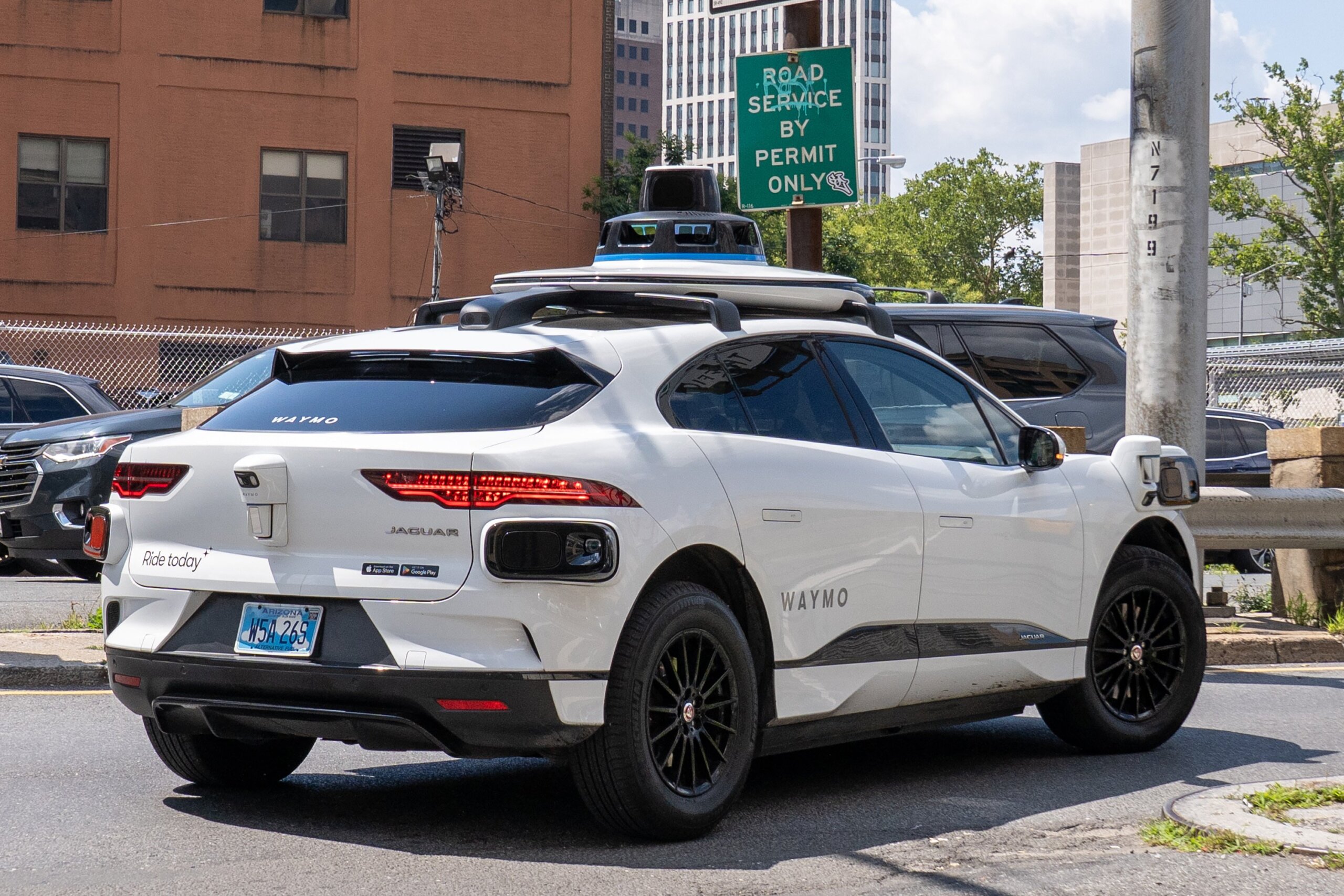
Robotaxis are braving the notoriously hectic New York City streets, as Waymo wins coveted approval to test its autonomous vehicles.
The self-driving ride-share company has been granted the first pilot permit by the city of New York. This permits the company to train its camera, LIDAR, and RADAR systems on the busy NYC grid. Other autonomous vehicle companies, including competitor Tesla, have made aggressive pushes into the metropolitan area in a race to own the market in major cities.
The permit allows Waymo to deploy eight vehicles (Jaguar I-Pace SUVs) throughout Manhattan and Downtown Brooklyn from now until late September. The vehicles will be occupied by a safety operator who will maintain constant contact with the steering wheel. Waymo is not approved to test with passengers under the city's taxi and limousine licensing requirements, and had to submit additional plans to the city's emergency services system and Department of Transportation to get approval. The company told TechCrunch it plans to begin testing its fleet "immediately."
Last month, Waymo announced it has plans for a robotaxi launch in Dallas in 2026, following the tongue-in-cheek deployment of Elon Musk-led Tesla robotaxis earlier this year. Waymo, a leader in the space, already operates fleets in San Francisco, Austin, Phoenix, and Los Angeles. For several years, Robotaxi companies have been gradually piloting autonomous vehicle services in major cities (predominantly California), but few have gone fully to market.
Tech
Apple eyes Google Gemini for Siri upgrade
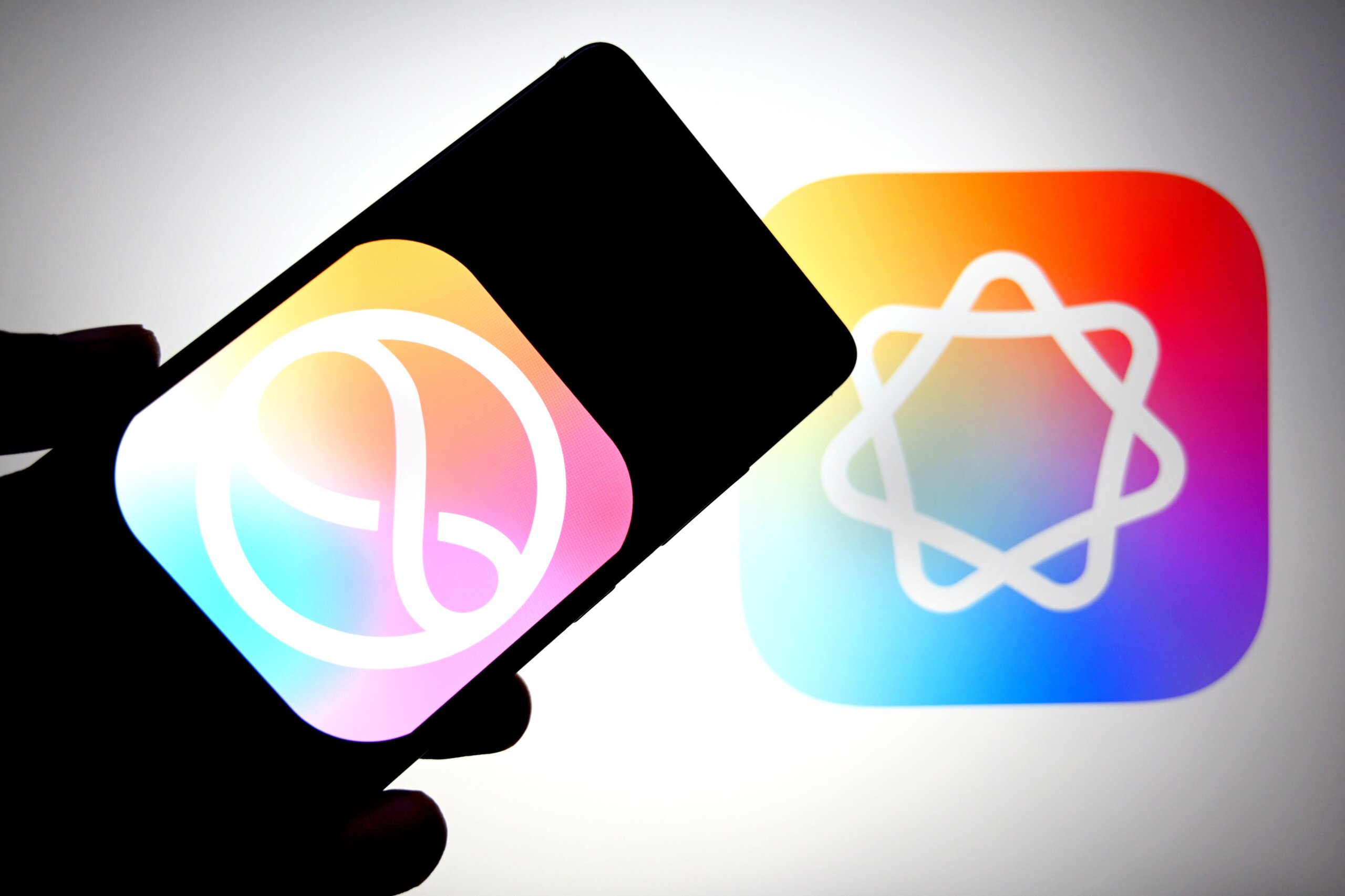
Insiders say that Apple is in talks to use Google Gemini to beef up its already AI-enhanced iOS assistant.
First reported by Bloomberg News, the anticipated Siri upgrade — now slated for a potential 2026 release — may come as a customized LLM powered by Google's own Gemini chatbot. It's the latest in Apple's months-long exploration of external partnerships.
Sources familiar with the company told Bloomberg that Apple approached Google's parent company, Alphabet Inc., about a custom model, and Google, in turn, has been testing a model that can run on Apple's servers.
In June, rumors circulated that the iPhone creator may shelve its plans to build an in-house LLM to power a better Siri in addition to its Apple Intelligence features, and was instead seeking a partnership with either OpenAI's ChatGPT or Anthropic's Claude. Internally, the company has been weighing the pros and cons of an internal Siri AI (dubbed the "Linwood" project) versus an external technology (named "Glenwood").
At the time, Apple's interest in an outsourced Siri AI seemed like a defeat amid a still-expanding AI boom, as the company's rivals poached Apple's own leading AI talent to expand their efforts. But, in just the past month, other Big Tech companies have also decided to scale back their AI investments — a shift that some say signals an end to the AI "bubble."
Neither Apple nor Google confirmed the possible partnership, although both have signaled that a Gemini integration with Apple devices may be on the horizon in addition to their existing Search collaboration. The integration would be similar to previous deals between Apple and ChatGPT.
-

 Entertainment5 months ago
Entertainment5 months agoNew Kid and Family Movies in 2025: Calendar of Release Dates (Updating)
-
Tech5 months ago
The best sexting apps in 2025
-

 Entertainment2 months ago
Entertainment2 months agoBrooklyn Mirage Has Been Quietly Co-Managed by Hedge Fund Manager Axar Capital Amid Reopening Drama
-

 Tech6 months ago
Tech6 months agoEvery potential TikTok buyer we know about
-
Tech6 months ago
iOS 18.4 developer beta released — heres what you can expect
-

 Politics6 months ago
Politics6 months agoDOGE-ing toward the best Department of Defense ever
-

 Tech6 months ago
Tech6 months agoAre You an RSSMasher?
-

 Entertainment4 months ago
Entertainment4 months agoKid and Family TV Shows in 2025: New Series & Season Premiere Dates (Updating)

